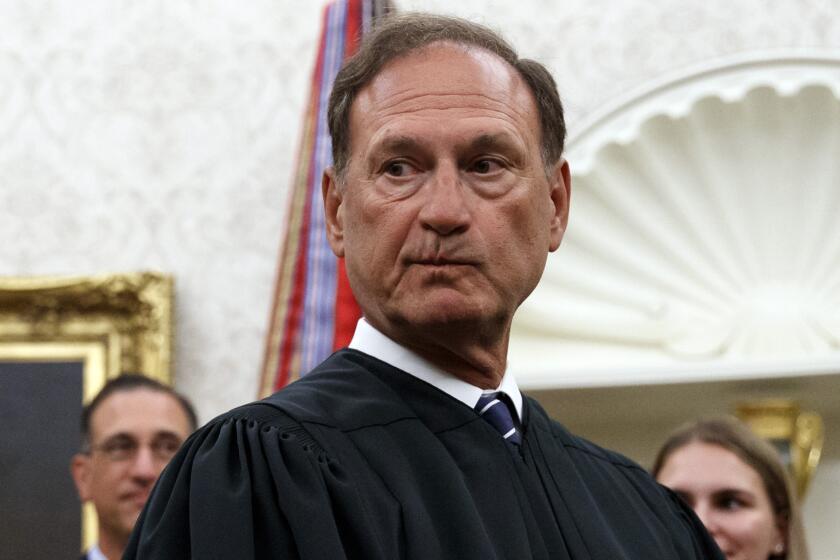Looking beyond the vision of L.A.
- Share via
After 13 years, Con Howe is retiring as Los Angeles planning director, and already there’s a clamor for a “visionary” successor.
I agree. Los Angeles desperately needs an inspiring new vision. But vision by itself is not enough. L.A.’s history is littered with grand plans that have failed. The real challenge is to turn great visions into great places.
Consider these two perspectives on what’s expected from “planning”:
“To provide sound, professional land-use guidance and the highest level of technical service to achieve safe and healthy residential neighborhoods and a secure business climate [that] fosters sustainable economic growth.”
“To transform Los Angeles into a city that connects our communities and brings us all closer together, so that as Venice was in the 15th century, as London was in the 19th century, Los Angeles can and will be the great global city of our century.”
The first is the “mission statement” of the city’s Planning Department. It reflects the dismal state of the profession and the bureaucratic mind-set regarding planning that dominates in Los Angeles. New plans are produced -- and routinely ignored. Caught in a maze of obsolete regulations, planners are relegated to reacting, not planning. The landscape of L.A. is actually determined not by thoughtful, deliberative planners, but by bare-knuckled brawling among developers, environmentalists and neighborhood activists.
The second statement comes from the inaugural address of Mayor Antonio Villaraigosa, and it echoes the days when L.A. dreamed big. In 1928, for instance, the Chamber of Commerce hired “the best brains” in the U.S. to draft a blueprint to reshape the entire county through an integrated network of parks and boulevards. Remembered as “Eden lost,” the magnificent plan was overtaken by the Depression. Five decades later, under Mayor Tom Bradley, Planning Director Calvin Hamilton envisioned a regional network of “centers” linked by rapid transit. Most of the hubs, such as Warner Center, emerged but the failure to build adequate transit fueled today’s crushing traffic.
So how can we ensure new dreams will be fulfilled? What can a planning director do to tackle the daunting scale of this dense and sprawling mega-city, so that L.A. can become the great “global city” imagined by the mayor?
Los Angeles Police Chief William J. Bratton inherited a similar challenge when he took over the demoralized New York City Police Department in 1994. “There was a sense of doom on the street,” he recalled. But Bratton succeeded, producing the largest year-over-year drop in crime since World War II.
A similar sense of doom now grips Los Angeles regarding traffic, housing and quality of life. The conventional wisdom is that planners can do little about it. But that’s not true. Three elements are key to a turnaround:
Civic art: Forty years after Jane Jacobs’ scathing attack on city planning in “The Death and Life of Great American Cities,” planning remains a priesthood of paperwork, divorced from how places actually function. But it doesn’t have to be that way. At City Hall in Milan, Italy, I found no “planning department” listed. After much confusion, an English-speaker realized I wanted what is known as the department of “urbanistica.”
Because Italians love their cities, “urbanistica” planners take a leading role in every aspect of making cities work. They would never dream of leaving traffic engineers in sole control of streets, for instance. But in L.A., planners are muscled aside by the Department of Transportation, which explains why our boulevards are so uniformly bleak and ugly. The “civic art” of making great places has been lost in the U.S. because we segregate people who “do” from those who merely “plan.” Planners must partner with every department to ensure we get the desired results.
Civic engagement: Cities must succeed at the neighborhood scale or they won’t work at all. That’s where the passion and civic responsibility of citizens can be harnessed and put to work. We’ve learned this from “community policing,” and must apply it to “community planning,” so that residents actively work with the city to improve their neighborhoods, whether by planting trees or creating new charter schools.
Human scale: It’s important to remember that the grandest vision for L.A. is not a colorful new map splashed with pricey mega-projects. Thinking big means supporting neighborhoods with quality schools, safe streets, green parks and places people call home. The latest name for this is “new urbanism.” But it’s not “new” -- it’s remembering that even in big cities, you have to sweat the small stuff. Making a “Grand” Avenue, for instance, is more about the vitality of the street than the grandeur of the skyline.
The reason we need vision is that we’ve lost sight of why cities work -- or don’t. L.A. is at the heart of our interconnected region, and its success is vital to us all. “We stand poised between the promise of immense possibility, and if we fail to act, a future of profound uncertainty,” Villaraigosa warned. Vision isn’t enough. We must act to achieve the immense possibility.
Sign up for Essential California
The most important California stories and recommendations in your inbox every morning.
You may occasionally receive promotional content from the Los Angeles Times.







